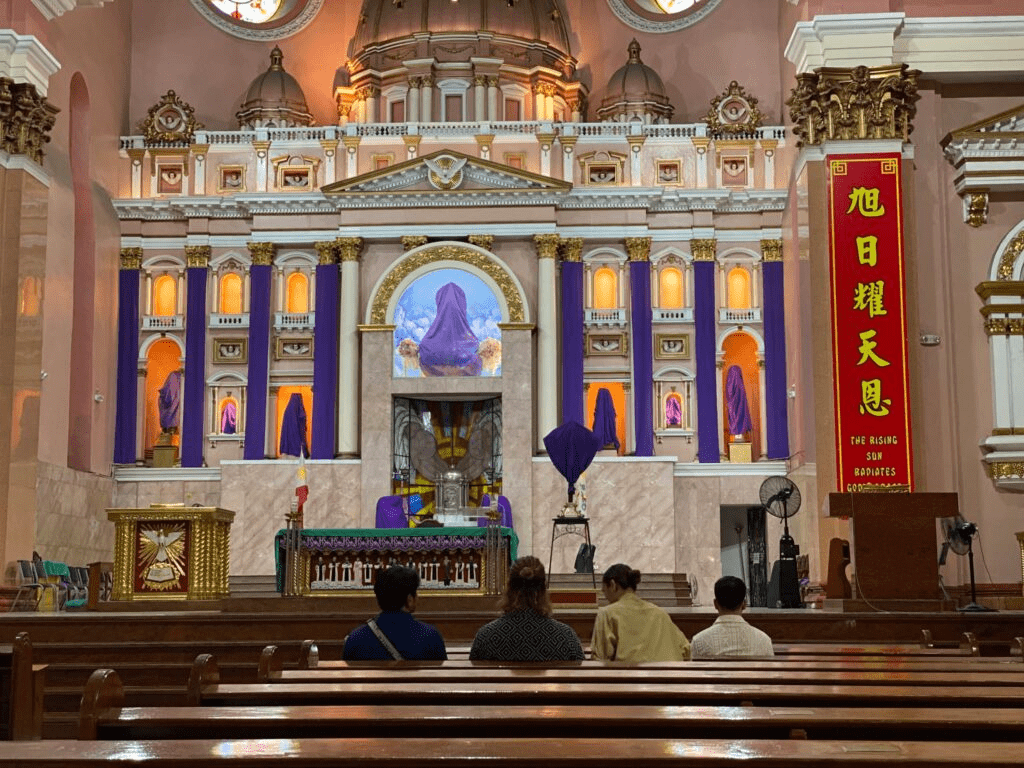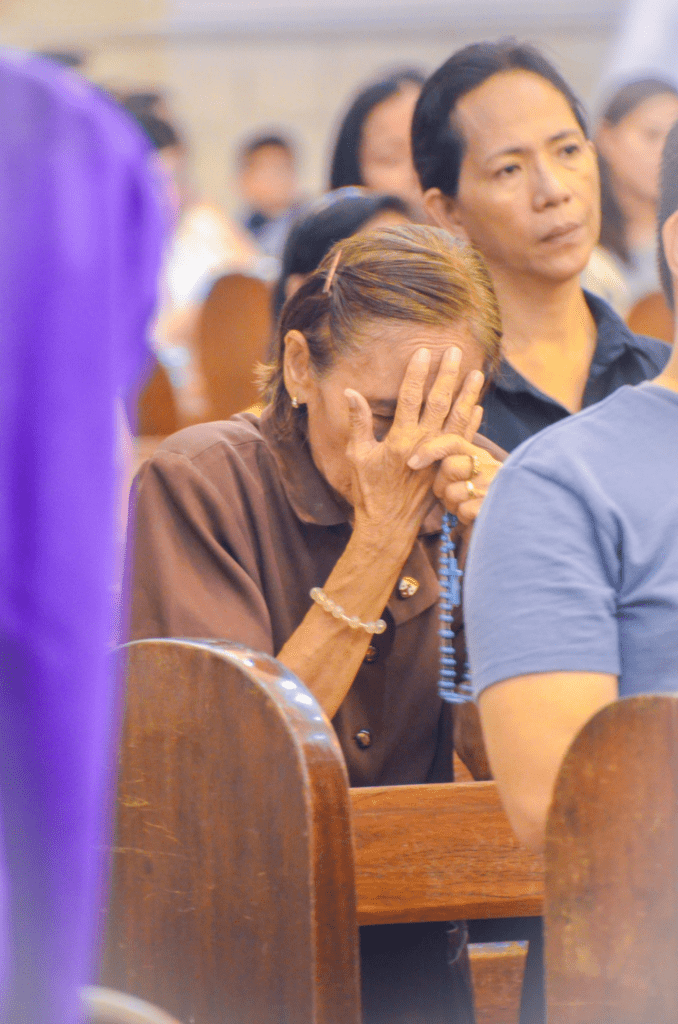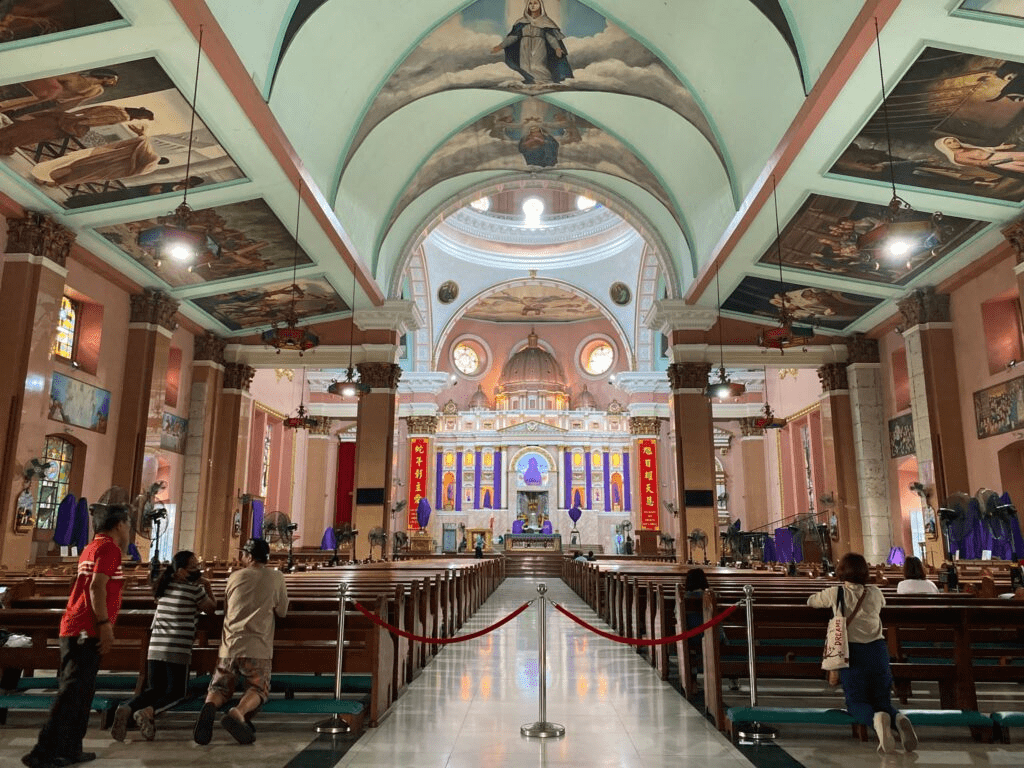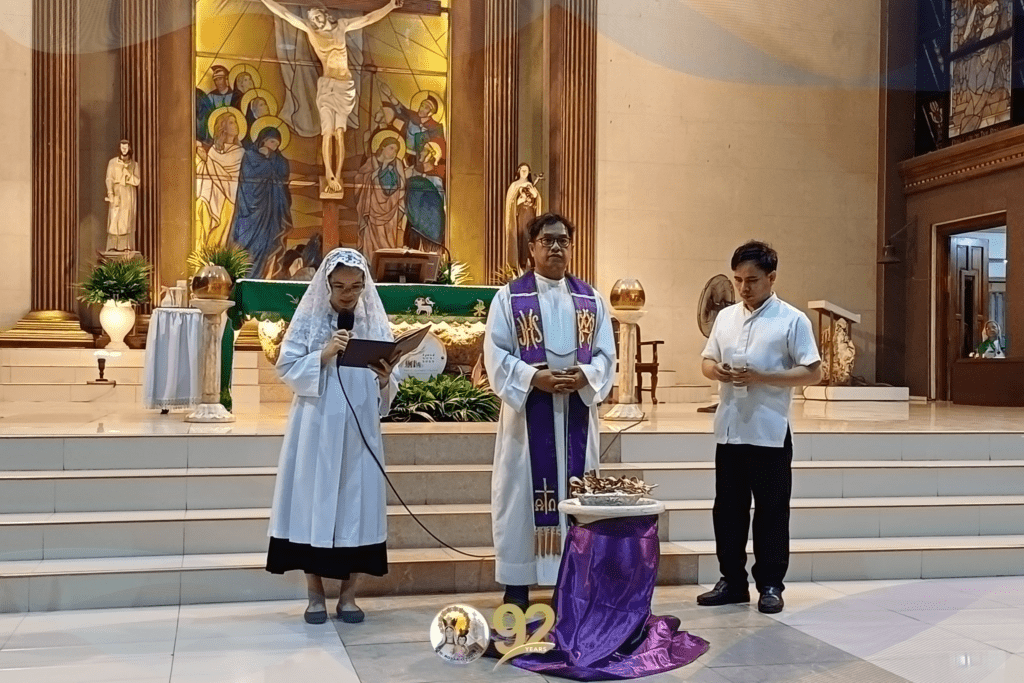If you’ve stepped inside a Catholic church in Cebu— or anywhere in the Philippines —during the Lenten season, you might have noticed something different.

Statues of saints, crucifixes, and religious images are often covered in purple veils. The once vibrant altars appear solemn and bare.
This isn’t just a random practice— it’s rich with meaning and tradition, especially in the context of the Filipino Catholic faith.
So, why purple? And why cover the saints at all?
The Color of Penitence and Reflection

In the Catholic Church, purple (or violet) is the liturgical color associated with penance, preparation, and sacrifice.
It’s the official color of the Lenten season, a 40-day period where Christians are called to reflect, fast, and prepare spiritually for the resurrection of Jesus on Easter Sunday.
In the Philippine setting, Lent is marked by various traditions—from pabasa and Visita Iglesia to processions during Holy Week.
The purple cloth used to cover religious images is a visual reminder of this sacred time, prompting churchgoers to enter a state of deeper prayer and contemplation.
Covering Saints: A Shift in Focus

The practice of veiling saints usually begins on the 5th Sunday of Lent, also known as Passion Sunday, and continues until Good Friday or Easter Vigil.
By covering the statues, the Church invites the faithful to shift their focus from the glory of the saints to the suffering and sacrifice of Christ.
It’s not about forgetting the saints, but rather about creating a spiritual atmosphere where the faithful are not distracted by external beauty, allowing them to meditate more intensely on the passion of Jesus.
In Filipino culture, where religious images are often elaborate and cherished, this temporary absence creates a powerful sense of longing and anticipation for Easter.
A Tradition Rooted in Simplicity and Humility

In a country where faith is deeply woven into daily life, where even small chapels are adorned with saints and flowers, the act of covering these images in somber purple is a symbolic gesture of humility.
It reflects our shared journey with Christ through sorrow, death, and ultimately, resurrection.
As Holy Week approaches, the veils will be lifted. The colors will return. The bells will ring. But until then, the purple cloth remains— quietly reminding us of the depth of Christ’s love, and the spiritual renewal that awaits.

